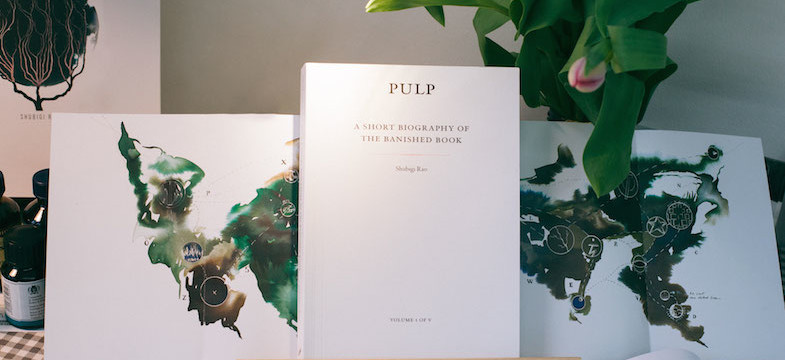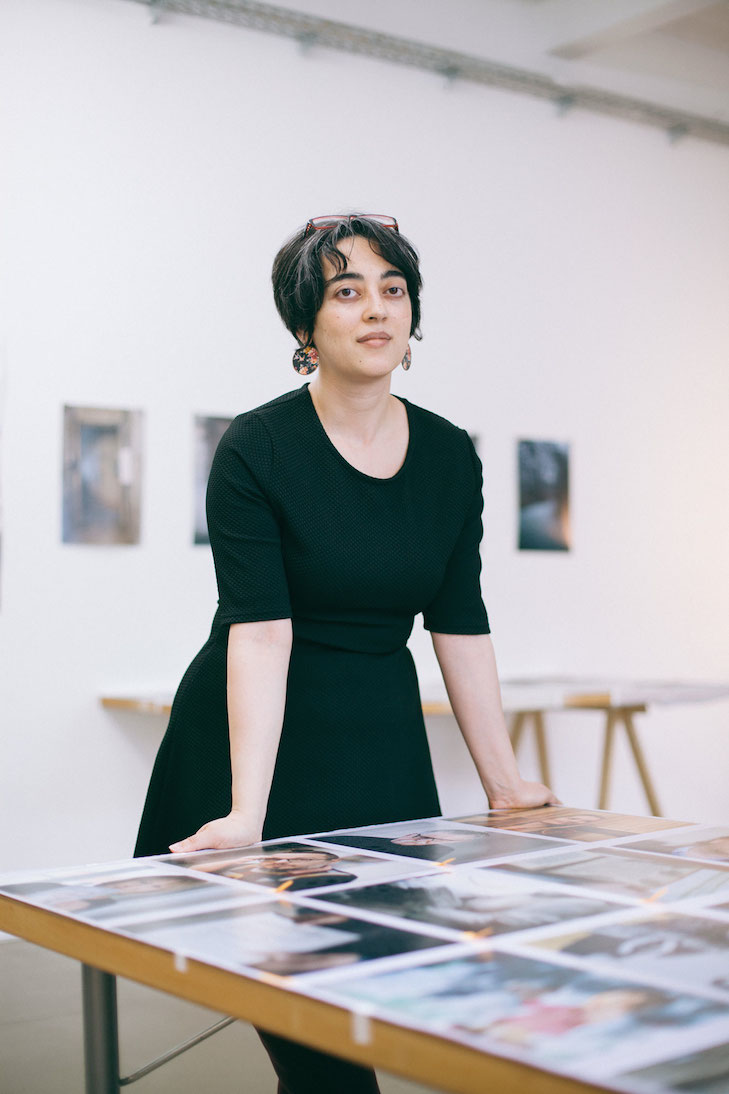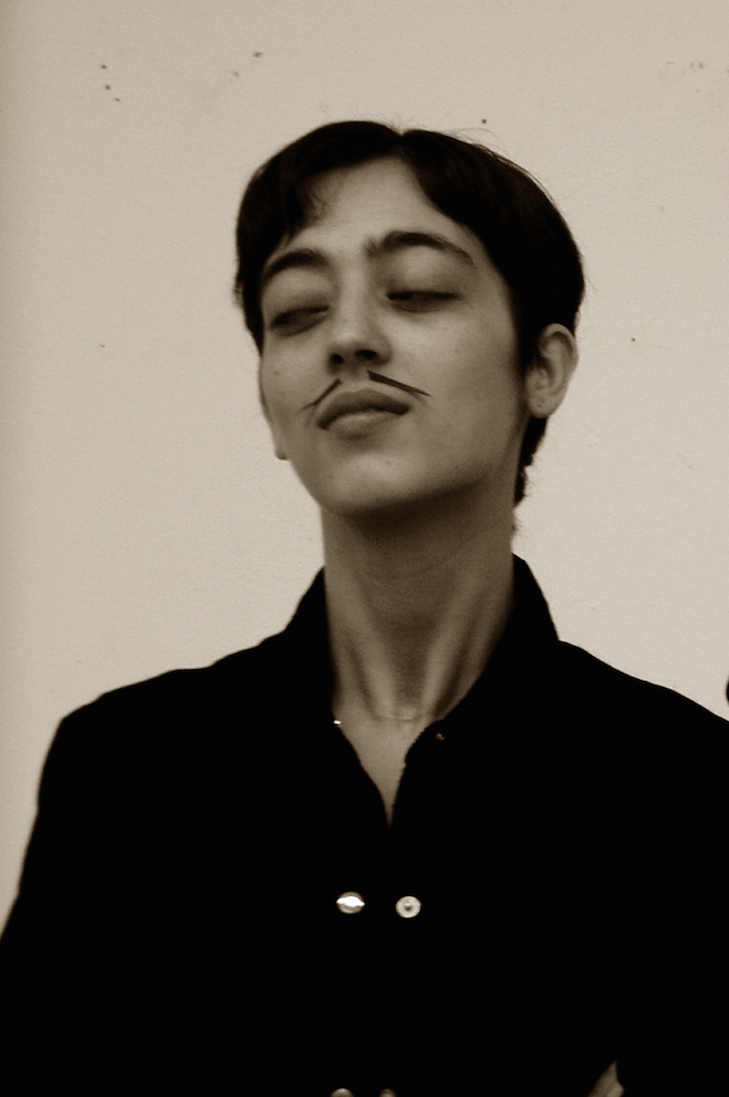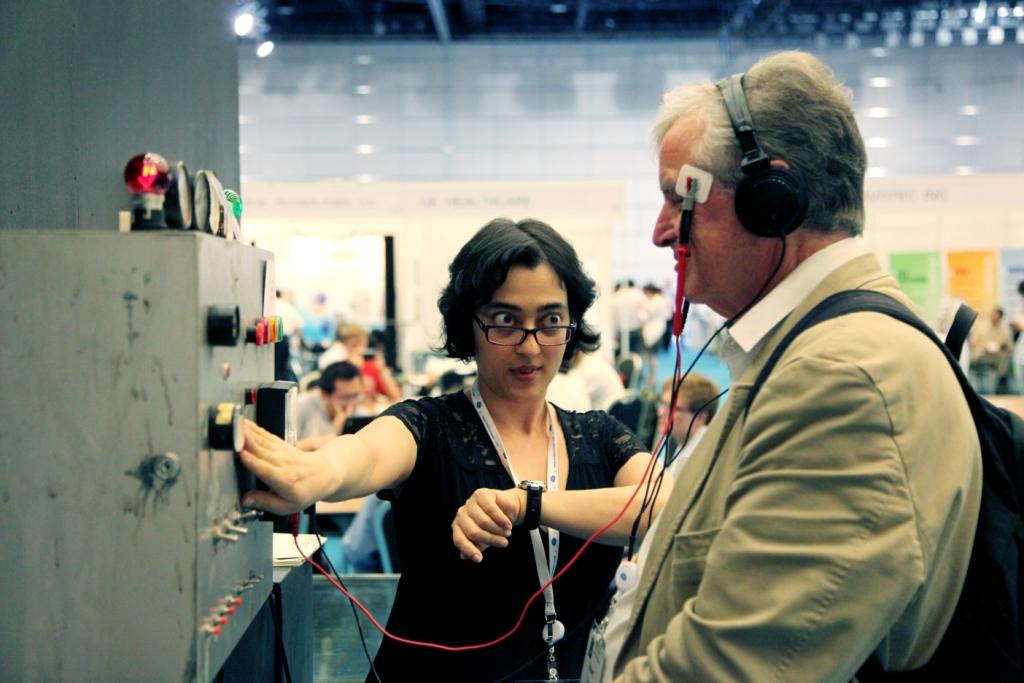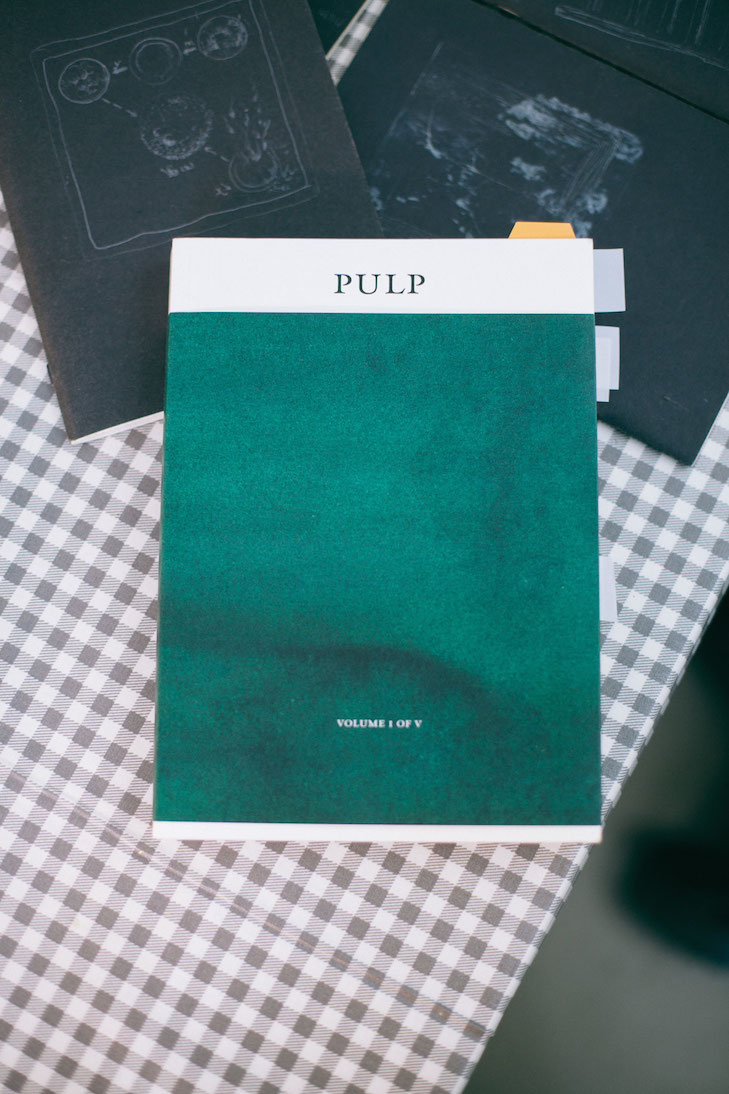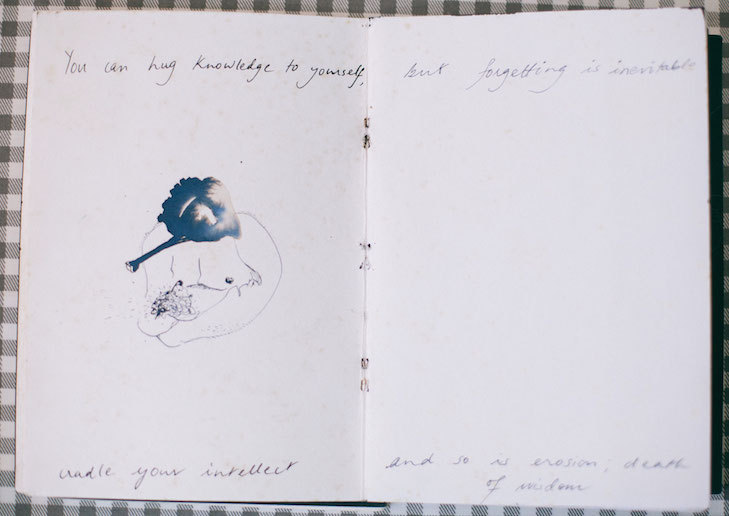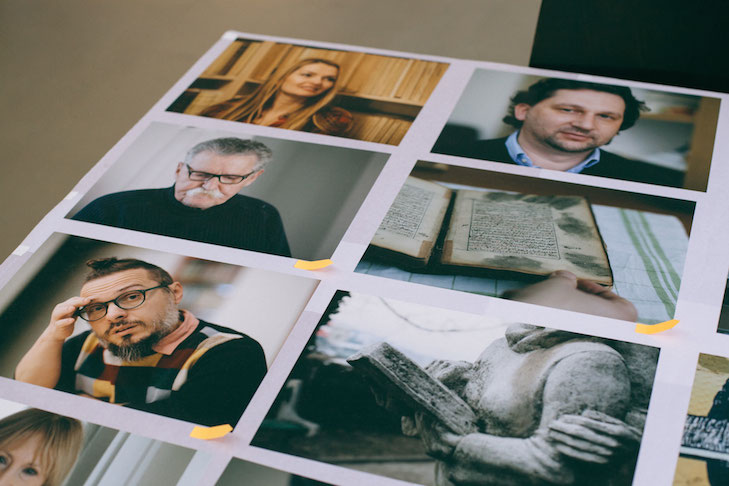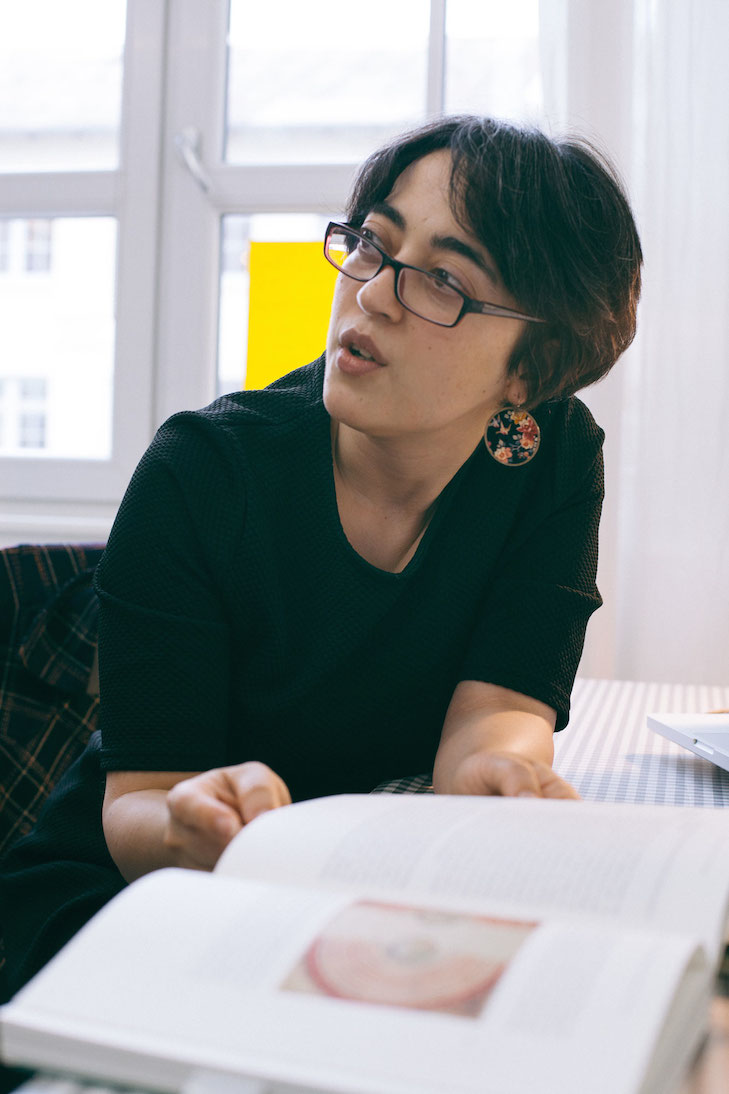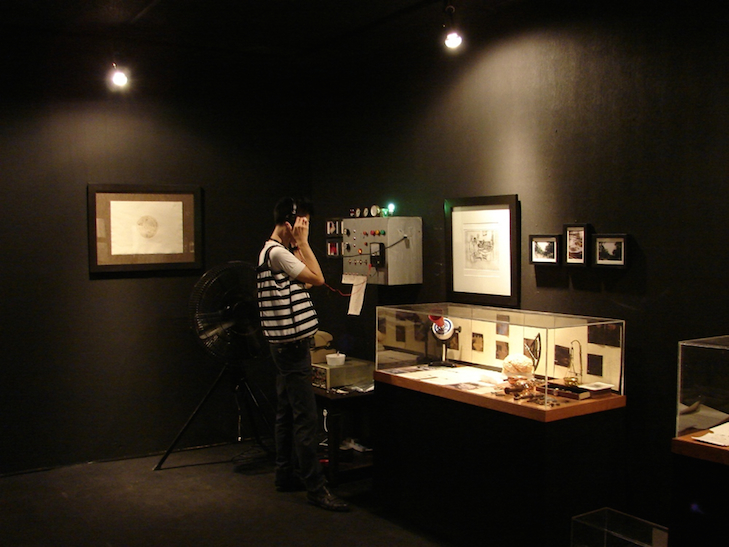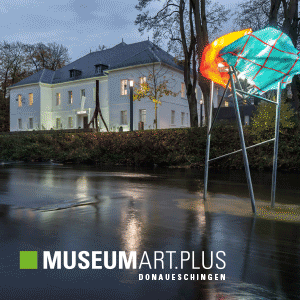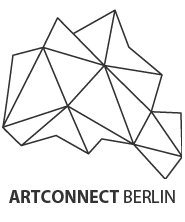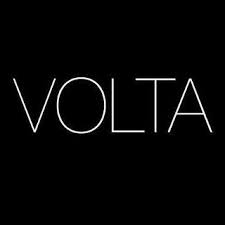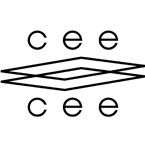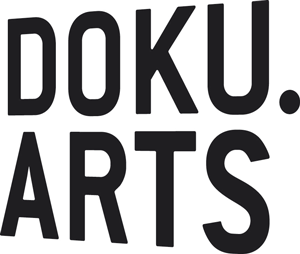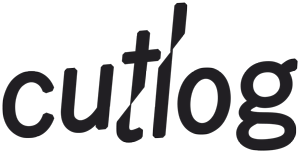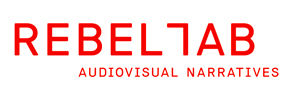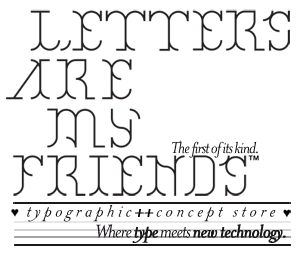Having grown up among the rare and old books of her parents own library, the history of science, literature and libraries themselves have been focal points of her artistic work, which took off after moving to Singapore at age 27,
when I finally studied art and my life really began.
One of her first works developed out of shock at Singapore’s rampant consumer culture and throwaway culture. The Study of Leftovers (2003/4) is an archaeological study of Singapore’s garbage, which asks what the fictional scientist S. Raoul would learn from the detritus of our civilisation, if the city really became extinct.
I taught myself archaeology in order to do that. I’ve taught myself multiple scientific disciplines, just to write and to make artworks. I do an outrageous amount of research and study, just because I can. And that’s why I love being an artist: I can go into an entirely unrelated field, one in which I have absolutely no formal training, but the great thing is it allows me to do whatever the hell I feel like with it.
This freedom was born out of resentment. Growing up as a girl in traditional India, especially as daughter of intermarried parents, who did not conform to the caste system or partake in religious community, Rao always had the feeling of being a second class citizen. In school she was told:
Don’t. You can’t study science, you’re a girl!” I had a cute face when I was a kid, so obviously I couldn’t have a brain behind that. It was very simple: No science for you, girl.
And as with all of her anger she vented it in her art.
All my work comes from anger. But it always comes out as humour.
So she became the scientist S. Raoul, a fictional character who was the protagonist of her artwork and writing for almost a decade. As him she studied neuroscience, wrote peer-reviewed papers and even exhibited her pseudo-scientific work at the global conference of neuroscientists. This work claimed to prove, that art deranged the brain, and was a way of pointing out the absurdity of those who dismissed contemporary art as empty, controversial or unnecessarily provocative. Shubigi Rao, disguised as a booth girl introducing Raoul’s fake electroencephalography machine (EEG), helped the intrigued scientists with the electrodes and presented her rusty crocheting needles, which a prize winning neuroscientist mistook for 19th century Lobotomy tools.
After Raoul’s symbolic death in 2013 Shubigi emerged from obscurity. She held the Retrospectacle of his work and staged herself as his biographer, publishing The Life and Times of S. Raoul. Wrapping up her story, one of the many stored in her mental archive, she concludes:
I could only get away with this nonsense, this weird way of working, because I was doing it under a male name.
So would you say your art questions science and its sole claim to the truth?
Yes, it does. I have always poked fun at science. I don’t valorise written knowledge — I mean, I love books obviously — but I am also aware of how they can be used as forms of oppression. Books aren’t sacrosanct, they aren’t sacred objects, you know, and this goes for science as well. […] For instance, I’m particularly interested in when the separation happened between what is called natural philosophy, which eventually became physics, and the so-called hard sciences. And how botany is no longer a hard science: You can’t be a naturalist scientist anymore, a naturalist is only someone who is an explorer, or an artist, or a writer, an observer. It’s all very specialised and institutionalised now.
I’m interested in the history of science because I grew up with a natural history library. My parents had a library full of rare books, old books. So I grew up reading all that really strange stuff. And in fact a lot of what I’ve written reads like a 19th century naturalist scientist.
Having read the first volume of her work Pulp – A Short Biography of the Banished Book, a genius 268-page chimera of personal narration and scientific writing interspersed with thoughtful photographs and intricate ink drawings and paintings, I cannot help but agree. It betrays the work of an artist, if their language is marked by such visual and poetical virtuosity:
This book […] is a symbol, of course, but its existence is also, always, an act of resistance. It is the forcible wrestling of words out of the muck and murk of memory, and sharpening amoebic, anaemic semi-formed thought onto paper. It involves the thankless mental struggle of warning internal, infernal editors and ideological tyrannies, all demanding their bloody rightful due. Even when fixed in type, pinned down on the sheet, it is a sketchily penned-in shadow, […] curated in agreeable linguistic duplicities. Simply put, for me it [writing] will always be a second-hand experience […].
This is why I think I am a reader more than I will ever be a writer, though I must shamefacedly admit, dear reader, you will not think the same.
quoted from the introduction of Pulp. A Short Biography of the Banished Book
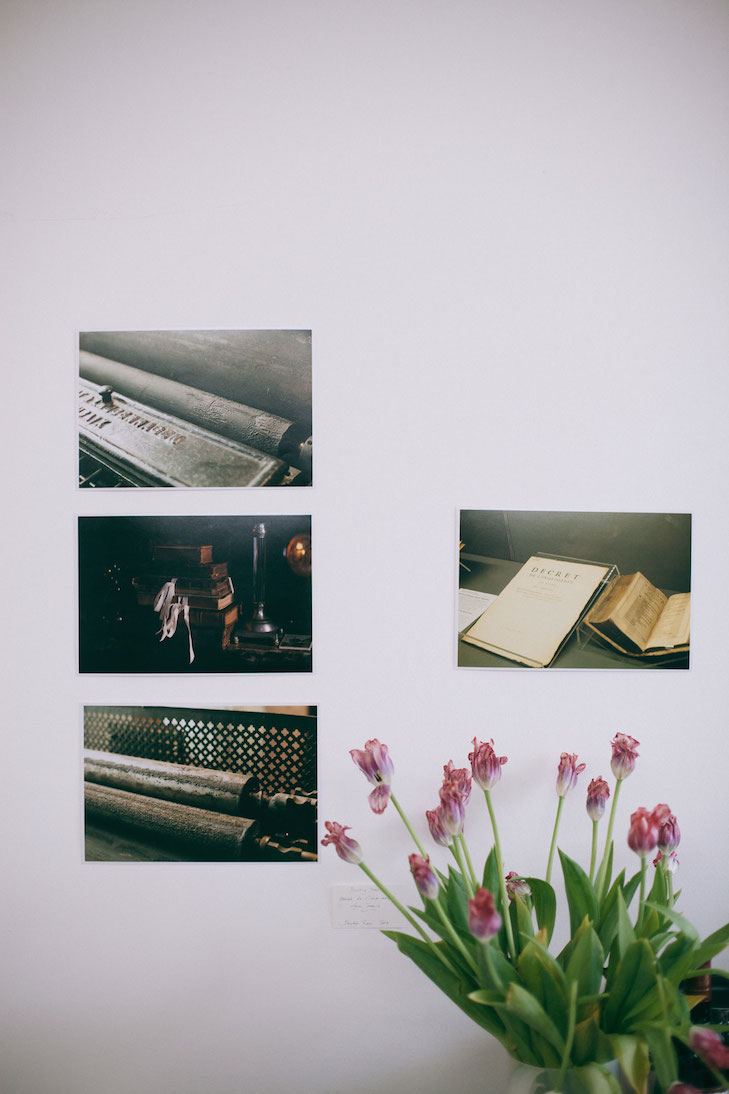
Photographs of Rao’s research adorning her studio space at Künstlerhaus Bethanien, photo: Kathrin Leisch
For 10 years Shubigi Rao has been travelling far and wide to track down people, books and anecdotes that narrate the story of library destruction throughout history in a series of 5 books and a documentary.
What topics are you dealing with in the Pulp?
And it [Pulp] also talks about censorship, oppression, even things like national language: Who decides what singular language should be dominant, what’s ‘pure’ language and what’s not. […] Language only works if it is spoken. Latin is a dead language because it is not spoken anymore. So its easy to set protocols for it. But it’s very hard to do that with English, the French try it…
…Germans try it
Yes, but for example in German you have these glorious compound words! That to me is the most beautiful thing and I’m incredibly jealous we don’t have that in English, because English is the only language I am fluent in. I remember when my mother explained to me what ‘Schadenfreude’ meant. I couldn’t stop laughing!
Like Weltschmerz, It means when you’re feeling somehow distraught with the state of the world. You read about book burning and the demolition of libraries and you just think: No! Why is there so much wrong with the world. And then you have ‘Weltschmerz’ – world pain. Its very heavy.
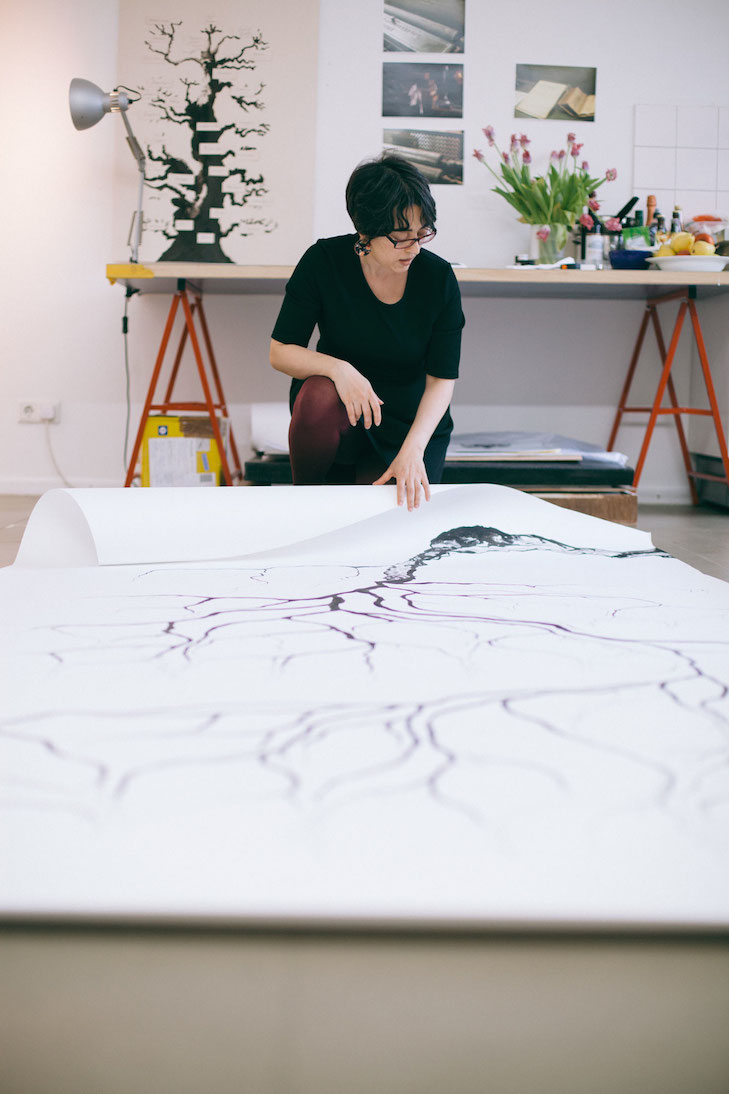
The artist showing us her ink drawings for the coming exhibition „Written in the Margins“, photo by Kathrin Leisch

Ink – Shubigi Rao uses ink for all her drawings since she was first allowed to use it in secondary school, photo: Kathrin Leisch
The ‘Weltschmerz’ caused by library destruction, the tragic loss of cultural heritage, which runs like a drop of black ink across the tapestry of human history, seems to be what drives Rao to tell the stories of those who have fought cultural genocide, protected their books and ideals in the face of oppressive regimes.
If our history is anything to go by, all books are predestined ashes, whether flying like confetti at fascist parades, or pulped, dissolved, rendered into nothing more than fragments, scraps of phrases in the living memory of its ageing readers
She recounts the stories of the people she met along the way and interviewed for the film – professors, librarians, activists, fire-fighters, or a woman from a Brasilian favela, who worked as a rag-picker. Fascinating, vividly told anecdotes of lost records.
For example the brave printer of Spinoza’s Tractatus, which was promptly banned by the catholic church for proposing for the first time the separation of church and state: Tracked down by two PhD students studying and comparing the printer marks, all for a piece of cake from a special Amsterdam bakery. “So many scholars have tried to find this printer, but two students did it using bibliographic material!”
In Sarajevo, where the Serbian army destroyed the national library in an attempt to destroy Bosnian culture, and break the spirit of the Bosnian people, firefighters bravely fought the flames. But there was also civilian activism, like in the case of Josip Pejakovic, a prominent actor in Sarajevo. Together with other artists, writers, actors, opera singers etc. they armed up and made it their quest to safeguard Sarajevo’s cultural heritage. Under sniper fire and bombardment, they smuggled out books, paintings – anything – from cultural institutions and hid them in basements and other hiding places, so that they would not be shelled.

Member of the volunteer corps who fought to save books and cultural institutions in the Siege of Sarajevo, photo: Kathrin Leisch
Her research is all based on word of mouth:
„It hasn’t been very straightforward as you can imagine, but often it has also been surprisingly easy. By the end they [the interviewees] realise how serious I am about it, […] and then often they say: “Oh, you have to talk to so-and-so, let me introduce you to so-and-so. So all I need often is the first person and I have an entry point to multiple institutions. A lot of institutions have expressed interest, even the Library of Congress. Of course, now I can’t travel to the US. I might get detained,”, she says half-jokingly.
This earned her one questioning look. Answering her style – with another story – Rao explains, how her work also covers situations, when the American state has tried using books as tools of oppression. With the implementation of the Patriot Act the Bush administration awarded itself powers to, as it said, obstruct terrorism. To this end the government demanded the entire borrower records of the American Library Association, who promptly refused such an invasion of privacy. They threatened with treason and with budget cuts before finally resorting to one last measure: Automated borrowing machines, collecting electronic data on every single library user, even those who borrowed “How to build a bomb for dummies”. Eyes sparkling, the artist concludes: „Now, librarians aren’t the most tech-savvy bunch, but before the government knew it, the machines started breaking down. They went that far as to damage, to sabotage, government property. That takes remarkable guts!“
And this is only the start: Rao plans to write a book every two years and continue interviewing people to tell their story. After her deadline – 8 years to go – Pulp. A Short Biography of the Banished Book will cover 5 volumes and films.
So have you started writing the second book already?
Of course not! I wrote the first Pulp in 4 or 5 weeks, I forget. But I wrote every night and I have a small kid also. So after he’d go to bed I’d go to my studio in Singapore and write till about 6 in the morning, then he’d wake up play with him a bit, get him ready for school. Get home, eat dinner, sleep for about 5 hours and wake to pick him up from the bus stop. That’s the time my body clock switched. So I should be able to replicate this ability really, because otherwise I’m screwed.
Wow! What are you going to write about in the second book?
I don’t know yet! But one of the things I am particularly interested in is the marginalisation of voices, in particular women. Because, think of this: 50% of the world’s population has historically not been published. And so I really want to talk about the systemic ways of silencing women and minorities.
Do you think this might change in the future?
Ha! From everything that I have studied, it’s intensely depressing. Print has aided oppression more that it has countered it.
What about art?
(laughs) Oh art is….. Change doesn’t last long enough. It just doesn’t. Fascist tendencies always come back around. Yes, continue resisting! I don’t believe in giving up. But the problem is that art is not… strong enough. Never been strong enough. So I’m very aware of the futility of what I’m doing, really deeply aware of it.
Weltschmerz, once again. But what would the beauty of art be without the darkness of the world to confront it?
Written in the margins |Shubigi Rao
OPENING 13.04.2017 | 7 pm
EXHIBITION 13.04. – 07.05.2017, 2 pm – 7 pm (closed on mondays)
Künstlerhaus Bethanien | Kottbusser Str. 10 | 10999 Berlin
http://www.bethanien.de
photo credit: Kathrin Leisch

